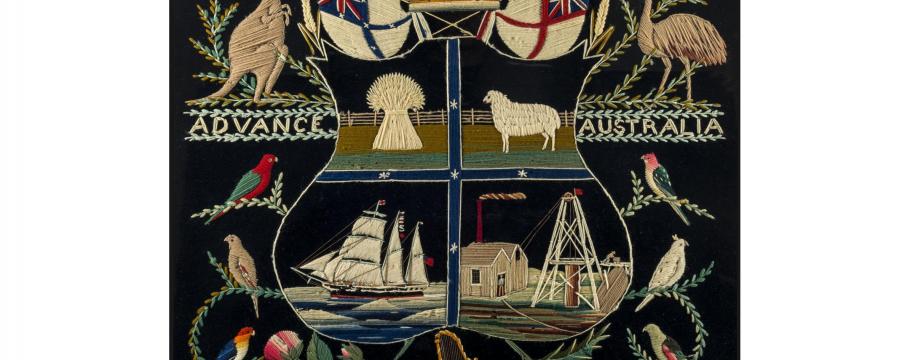
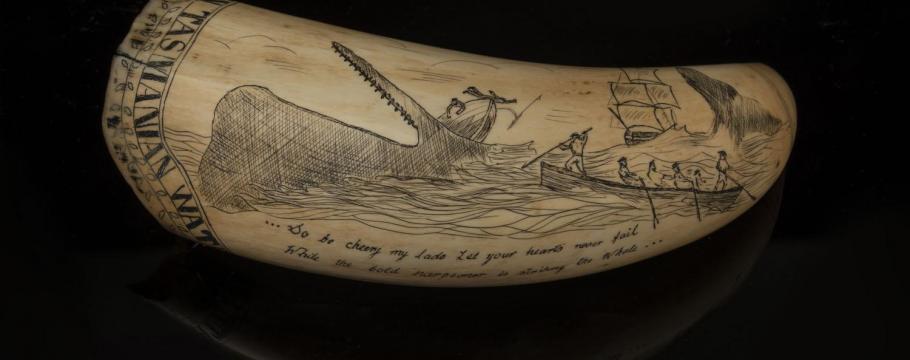
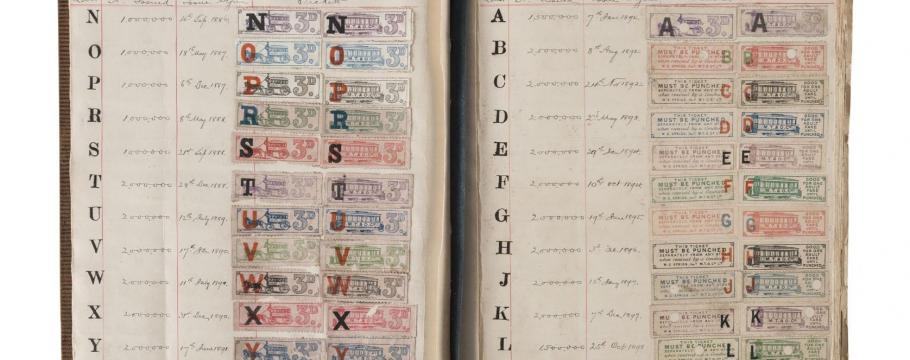
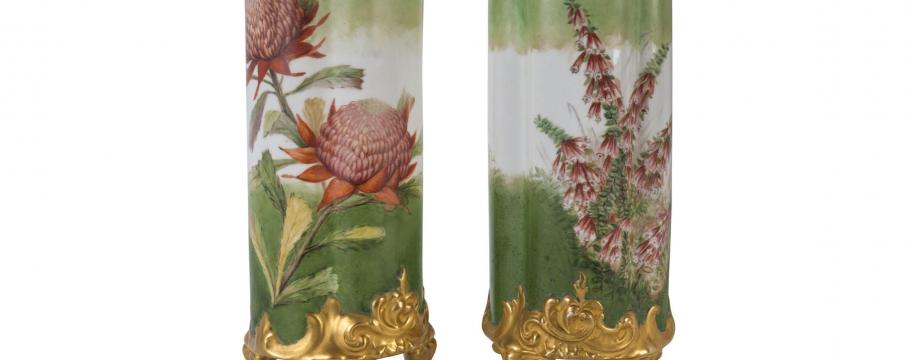
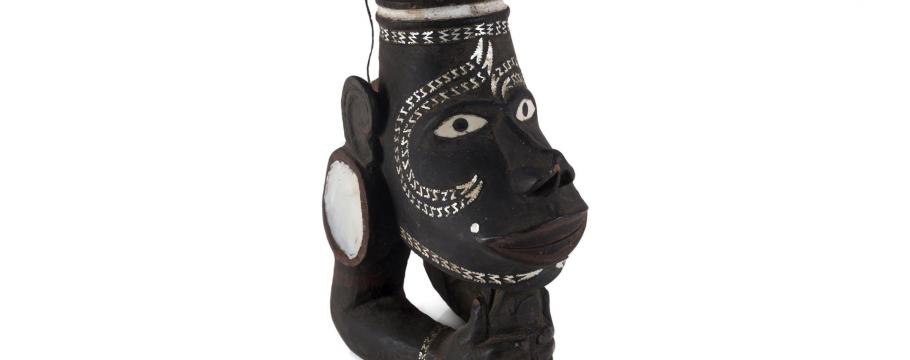
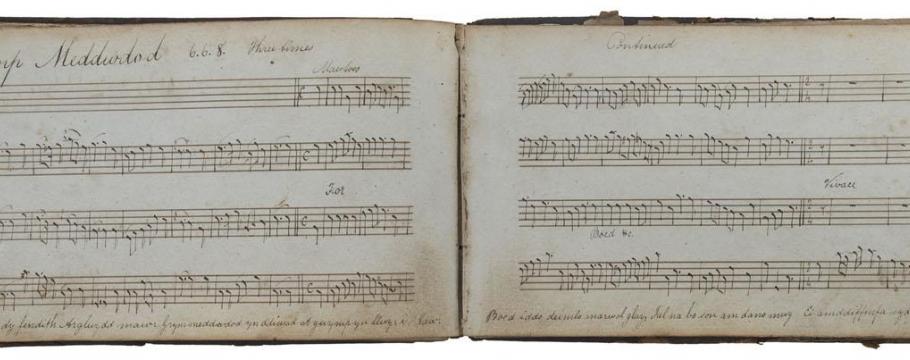
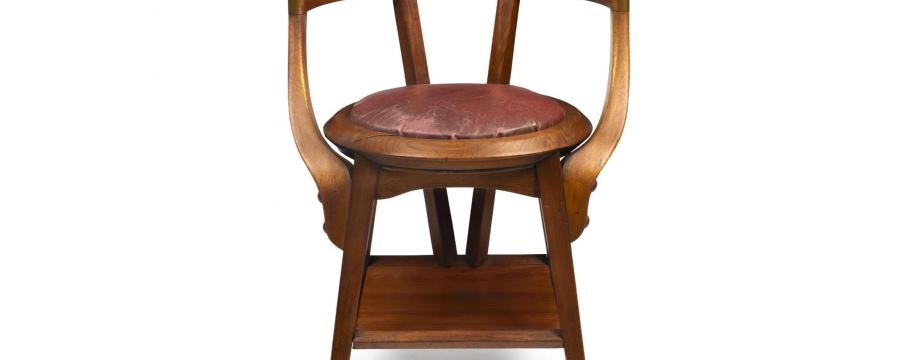

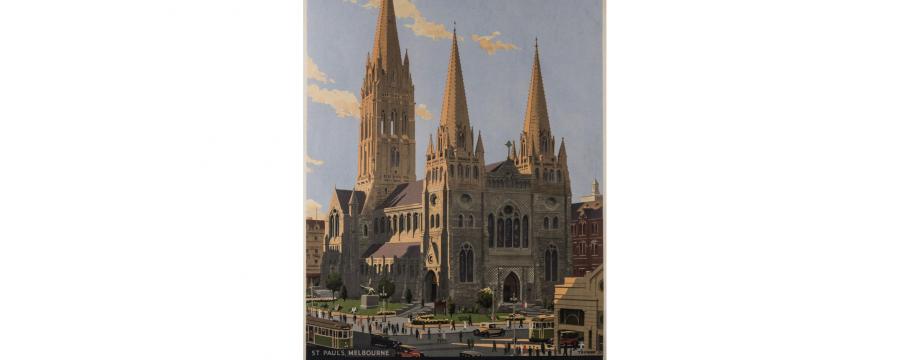
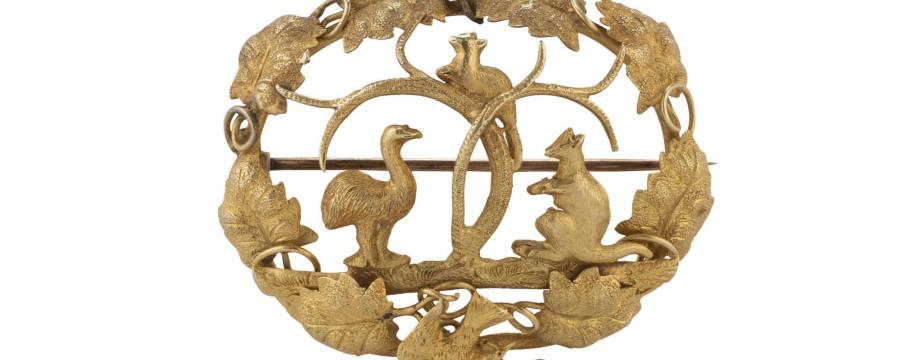
Melbourne's historic Australian auction a journey of remembrance
Author: Richard Brewster | Posted: 16th May, 2019
A unique Australian coat of arms made in wool about 1880 by William Duncan from the outback Queensland town of Charters Towers (lot 132) is typical of the historic flavour of Leski Auctions forthcoming Australian & Colonial sale from 12pm Sunday may 26 at 727-729 High Street, Armadale.
The shield’s four quadrants (bale of wheat, merino sheep, three-masted sailing ship and gold minehead) are surrounded by Australian birds siting amongst a Scottish thistle, English rose and Irish shamrock with kangaroo and emu supporting two white ensigns.
There also is a rising sun at the top and harp of Erin at the bottom with the words “Advance Australia” to complete the work.
The auction’s historic journey begins with a scrimshaw (more than 60 pieces all from one Victorian collection) and maritime section that features such examples as the whale’s tooth (lot 87) engraved with the words “Sperm whaling in Tasmanian waters, in memory of William C.J. Kirkwood of Boston Mass. who fell from aloft and was drowned in 25 years of his age, Feb. 10. 1850”.
The same inscription appears on a tablet erected by the captain, officers and crew of the ship Huntress of New Bedford at the town’s Seamans Bethel Church Memorial.
Two of the more remarkable items are reference albums (lots 582 and 583) containing hundreds of examples of early Melbourne Omnibus and Tramway tickets.
One is an official leather bound sample book of tickets from 1869 to 1915 and the other a companion volume of transfer tickets from 1887 to 1911.
A gorgeous pair of hand painted porcelain vases (lot 143) should appeal to collectors along with an unusual hand painted set of plates and compote stands (lot 169).
For those auction goers looking for tribal and indigenous artworks and artefacts, lot 230 – a 19th century Solomon Islands canoe prow (Nguzu Nguzu) is among the more distinctive items.
Another historic attraction within the convict era section is a choirmaster’s notebook (lot 380) belonging to Welsh convict, lay preacher and poet David Davies, who in 1844 was transported to Van Diemen’s Land (now Tasmania).
Born about 1812, Davies (also known as Dai’r Cantwr or David the Singer) was convicted and sentenced to 10 years transportation for his part in the Rebecca or Tollgate Riots around 1843.
While awaiting transportation in Carmarthen Gaol, Davies wrote the poem now known as the “Threnody of Dai’r Cantwr”.
When Davies arrived in Tasmania, he was sent to work on the east coast’s Maria Island and then placed in various people’s employ.
Unable to stay out of trouble (with brief sentences for minor offences), in April 1854 he received his ticket of leave and was conditionally pardoned in October of that year.
Davies died in August 1874 at Tasmania’s Midlands Ross Hotel from smoke inhalation after his pipe accidentally set fire to grass while he was asleep and intoxicated.
The auction contains plenty of colourful pottery and ceramic pieces including several works by early 20th century Australian potter William Ricketts, famous for his Aboriginal faces.
Among the Australian and colonial furniture section is a café Australia blackwood dining chair (lot 419) designed about 1916 by Walter Burley Griffin (architect for Australia’s national capital Canberra) and his wife Marion.
Other interesting historic items include an important piece of Australian Jewish history – a silver Kiddush cup made in Birmingham and presented on August 15, 1898 to Reverend A.B. Davis on completion of his 70th year at the Great Synagogue in Sydney.
James Northfield’s picturesque scene (lot 558) appears on the auction catalogue’s front cover while Percy Trompf’s Melbourne Centenary depiction (lot 561) is well worth a look.
There is a range of Australian and international art on offer including works by Marguerite Mahood (lot 591), Emanuel Philips Fox (lot 592), William Knox (lots 598-600), Norman Lindsay (lot 605) and Lloyd Rees (lot 608).
Of particular note is the Australian and colonial jewellery including lot 697 – a 19th century yellow gold brooch, featuring kangaroo, emu, possum and bird, attributed to Lamborn and Wagner.





